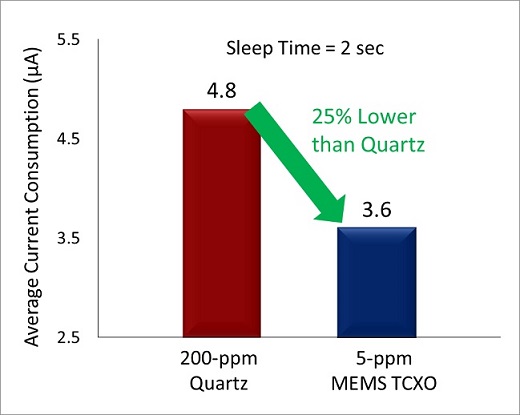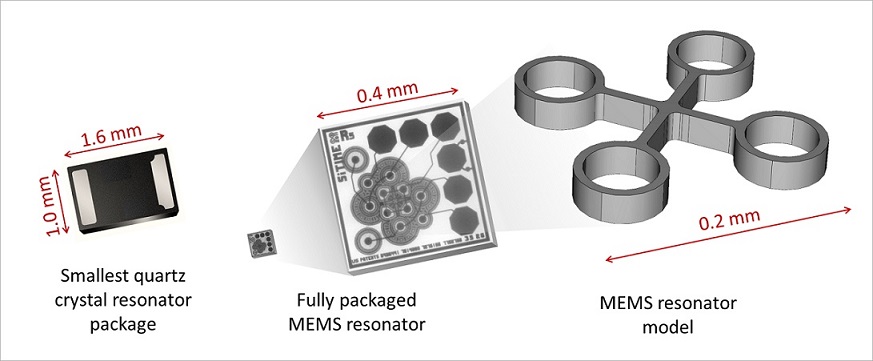Time – the fourth dimension – is often overlooked in the conversation on the anticipated emergence of ambient intelligence (AmI). As the IoT evolves, intelligence will be applied to make electronics systems smarter, predictive, and more helpful in our everyday lives. With everyday systems becoming much more intelligent, our environments will become sensitive and adaptive. However, without a time base, these systems will not be useful and AmI will not be realized.
Ambient Intelligence's Need for Precision Timing
AmI is building upon advancements in communications networks and adaptive software. In the realm of hardware, AmI will leverage developments in sensors, processors, and other components required for the hundreds of small electronic devices that will embed our surroundings. While Ami builds on these innovations, the timing function becomes increasingly important.
A heartbeat is essential for any human or electrical system to function. Clocks, which act as the system’s heartbeat, are fundamental on many levels. First, reference clocks bring systems alive and keep them operating at the required speed. Second, precise timing signals are needed to ensure information measured by sensors is accurately distributed to the intelligent systems.
Time is central to these systems. Just as AmI depends upon advancements in the higher-level functions, timing solutions at the core must leverage novel technologies for AmI to become the reality that many envision. Technology advancements are making timing more accurate and reliable, lower power, and smaller sized – all critical for AmI systems.

Developing Accurate Intelligent Systems
Domotics, or home automation, is an example of intelligent systems in use today. Accurate time is required for a smart home control system to be intelligent, to learn habits, and make data-based decisions that anticipate future behaviors and needs. Data, collected by sensors, is valid only if the time bases are synchronized, and systems can only be helpful if the sequence of events is recorded in the right timing order. Take the simple example of triggering a door sensor to switch on a hallway light. If the time record of the door sensor or light switch is off by more than a fraction of a second, the algorithm will not learn the correct timing of required events, and the light will not turn on at the right time.
In today’s connected world, the accuracy of the real time clock (RTC) is becoming more and more significant, and this importance will increase as more objects join the Internet of Everything. Let’s look at an early smart device example – the smart meter, designed to provide more information and capabilities for better energy usage. In this case, if the meter clock runs fast or is based on the wrong time interval for billing rates, any savings or benefits could be negated.
Intelligence is being deployed beyond our immediate personal environments. For example, structural monitoring of buildings and bridges or oil exploration using seismic sensor networks highlight the need for precise time stamping of measured data for analysis and prediction. The accuracy of these systems and the predictive data they provide is directly proportional to the accuracy of the time synchronization of the individual nodes.
Many of today’s solutions use expensive and power hungry GPS receivers or high powered RF networks to keep time. Tomorrow’s systems will be enabled by new timing technologies that provide high precision without the power consumption, bulky size, and high expense. These systems will use miniature, ultra-low-power, precision MEMS-based timing.
The relationship between low power and accuracy
In addition to accuracy, ultra-low-power technologies will be essential in the development of AmI. Low power is especially critical in real time clocks used in autonomous battery-powered systems because these timekeeping clocks are always on. MEMS, and the CMOS technologies supporting them, will play a vital role. Modern programmable MEMS kHz clocks consume micro Watts and have unique features to further reduce system power. Additionally, the higher accuracy of MEMS clocks helps reduce power consumption at the system level by extending sleep mode time.
The importance of precise time keeping is evident in sleep mode wakeup timers. Autonomous battery-driven nodes require power down intervals between computing and data transmissions to save power. In current applications, Bluetooth Low Energy (BLE) chip sets enable extended sleep times to save power. Each node has a predefined timeslot when it must communicate with the host to keep the connection alive and transfer data. If the wakeup and communications functions are executed more efficiently and accurately through more precise time, system power is greatly reduced.
Frequency stability, measured in ppm (parts per million), is the key metric for timing accuracy. Figure 1 shows 25% power savings by replacing a 200-ppm quartz crystal with a programmable 5-ppm MEMS TCXO (temperature compensated oscillator).

Power savings using a precision 32 kHz wake up clock in BLE systems
At present, 4G LTE systems use DRX (discontinuous reception) cycles that require precise 1.5 µs sleep time to keep mobile phones connected with the network. Frequency stability must be maintained at an accuracy of better than 1.5 ppm over a time period of 1s to 2s in an environment of fast changing temperatures. Loss of connectivity would lead to large overhead in RF traffic and additional computing effort to reacquire the link to the base station. In a future where data is seamlessly transferred to and from ubiquitous smart devices at volumes well beyond today’s levels, connectivity becomes tremendously important.
Timekeeping of 1.5 µs is a challenge for legacy quartz-based timing components. Temperature gradients of more than 10°C per second are seen in today’s electronic devices. Uncompensated 200-ppm quartz crystals typically display more than 3 ppm per °C temperature slopes, causing frequency errors of more than 30 ppm in 1 second. Some of this effect may be mitigated by electronic temperature compensation; however, quartz oscillators are limited by slow thermal coupling between the quartz crystal resonator and electronic temperature compensation, making quartz TCXOs unable to effectively respond to fast temperature gradients. In contrast, MEMS TCXOs maintain frequency accuracy under fast temperature changes and are a simple solution for handling fast temperature gradients.
Continued quest for low power and small size
For intelligent systems to be widely adopted and embedded into our environment, they must be very small. Micro and nano technologies will enable the requisite miniaturization. MEMS resonators measure less than 500 µm on each side and are less than 200 µm high, making them 90% smaller than quartz-based resonators, which are limited by physics in further size reduction.

Crystal resonator size (left) compared to MEMS resonator (right)
Chip vendors have started integrating high-precision MEMS resonators into their products to offer more integrated multi-chip modules (MCM) – a development made possible with encapsulated silicon MEMS technology. If the MEMS resonator is stacked on the IC, it consumes zero board space in the target system. Integration has many benefits beyond shrinking size. By integrating the clock, not only will devices have fewer external pins, they consume less power, have better performance and accuracy, and increase reliability and tamper resistance.
Technology working together
As ambient intelligence materializes, the number of digital objects interwoven into our environment will surge. These devices must consume very little power, and be made inconspicuous through miniaturization and integration. MEMS technology will play a critical role moving forward, making systems smaller, more reliable, and lower power. And importantly, MEMS timing will make smart devices smarter by making them more accurate – a necessity for systems to be predictive and responsive. AmI is building on many technologies, all working together, and advanced timing solutions will be at the heart.
-----------------------------
Thanks to Markus Lutz, Founder and CTO of SiTime, for his contributions to this article.
Related article: Timing's Critical Role in the AI Revolution